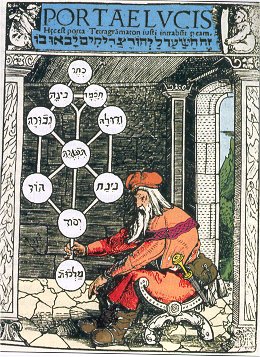
Western esotericism
Western esotericism, also known as esotericism, esoterism, and sometimes the Western mystery tradition,[1] is a term scholars use to classify a wide range of loosely related ideas and movements that developed within Western society. These ideas and currents are united since they are largely distinct both from orthodox Judeo-Christian religion and Age of Enlightenment rationalism. It has influenced various forms of Western philosophy, mysticism, religion, pseudoscience, art, literature, and music.
"Esoteric" redirects here. For other uses, see Esoteric (disambiguation).
The idea of grouping a wide range of Western traditions and philosophies together under the term esotericism developed in 17th century Europe. Various academics have debated numerous definitions of Western esotericism. One view adopts a definition from certain esotericist schools of thought themselves, treating "esotericism" as a perennial hidden inner tradition. A second perspective sees esotericism as a category of movements that embrace an "enchanted" worldview in the face of increasing disenchantment. A third views Western esotericism as encompassing all of Western culture's "rejected knowledge" that is accepted neither by the scientific establishment nor orthodox religious authorities.
The earliest traditions of Western esotericism emerged in the Eastern Mediterranean during Late Antiquity, where Hermeticism, Gnosticism and Neoplatonism developed as schools of thought distinct from what became mainstream Christianity.[2] Renaissance Europe saw increasing interest in many of these older ideas, with various intellectuals combining pagan philosophies with the Kabbalah and Christian philosophy, resulting in the emergence of esoteric movements like Christian Kabbalah and Christian theosophy. The 17th century saw the development of initiatory societies professing esoteric knowledge such as Rosicrucianism and Freemasonry, while the Age of Enlightenment of the 18th century led to the development of new forms of esoteric thought. The 19th century saw the emergence of new trends of esoteric thought now known as occultism. Prominent groups in this century included the Societas Rosicruciana in Anglia, the Theosophical Society and the Hermetic Order of the Golden Dawn. Also important in this connection is Martinus Thomsen's "spiritual science". Modern Paganism developed within occultism and includes religious movements such as Wicca. Esoteric ideas permeated the counterculture of the 1960s and later cultural tendencies, which led to the New Age phenomenon in the 1970s.
The idea that these disparate movements could be classified as "Western esotericism" developed in the late 18th century, but these esoteric currents were largely ignored as a subject of academic enquiry. The academic study of Western esotericism only emerged in the late 20th century, pioneered by scholars like Frances Yates and Antoine Faivre.
In popular culture[edit]
In 2013, Asprem and Granholm highlighted that "contemporary esotericism is intimately, and increasingly, connected with popular culture and new media."[169]
Granholm noted that esoteric ideas and images appear in many aspects of Western popular media, citing such examples as Buffy the Vampire Slayer, Avatar, Hellblazer, and His Dark Materials.[170] Granholm has argued that there are problems with the field in that it draws a distinction between esotericism and non-esoteric elements of culture that draw upon esotericism. He cites extreme metal as an example, noting that it is extremely difficult to differentiate between artists who were "properly occult" and those who superficially referenced occult themes and aesthetics.[171]
Writers interested in occult themes have adopted three different strategies for dealing with the subject: those who are knowledgeable on the subject including attractive images of the occult and occultists in their work, those who disguise occultism within "a web of intertextuality", and those who oppose it and seek to deconstruct it.[172]